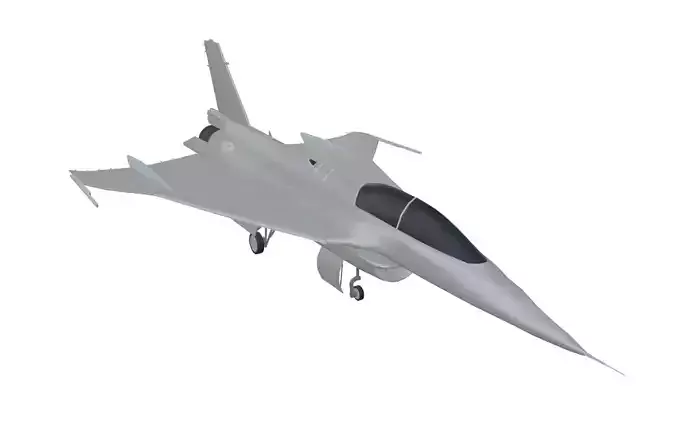1/78
Perfect for use in games and simulation projects.
The General Dynamics F-16XL was an advanced offshoot of the F-16 Fighting Falcon, conceived initially as a technology demonstrator under the Supersonic Cruise and Maneuver Prototype (SCAMP) program. Its design represented a bold reimagining of the F-16 platform, featuring a radically different cranked-arrow delta wing that significantly altered the aircraft’s aerodynamic profile and performance characteristics. Developed to explore the benefits of high-speed, low-altitude penetration and enhanced strike capabilities, the F-16XL was later entered into the United States Air Force’s Enhanced Tactical Fighter (ETF) competition in the 1980s. Despite its impressive advancements, it ultimately lost to the twin-engine F-15E Strike Eagle, which offered greater survivability and payload versatility.
The most distinctive feature of the F-16XL was its large cranked-arrow delta wing, which was 120% larger than the original F-16 wing. This unique wing shape enabled a significant increase in internal fuel capacity and weapons carriage, allowing for as many as 27 hardpoints compared to the nine found on a standard F-16. The aircraft’s airframe was lengthened by 56 inches (1.4 meters) through the insertion of fuselage plugs, which not only facilitated better fuel distribution but also improved internal volume for avionics and systems integration. To support the aerodynamic changes, the tail section was angled upward by 3 degrees and the ventral fins were removed to prevent contact with the runway during takeoff and landing. Although these modifications altered the aircraft's configuration, they actually enhanced stability and resulted in a smoother flight experience, particularly at high speeds and low altitudes.
In terms of materials, extensive use of carbon fiber composites in the construction of the wing structure helped reduce weight by approximately 600 pounds (270 kilograms), though the F-16XL remained about 2,800 pounds (1,300 kilograms) heavier than the standard F-16A due to its overall size and structural enhancements. These changes translated into significant performance improvements, including an 82% increase in internal fuel capacity, a 25% improvement in the maximum lift-to-drag ratio during supersonic flight, and an 11% improvement in subsonic conditions. Overall, the F-16XL could carry twice the ordnance of a conventional F-16 and deliver it 40% farther, substantially expanding its mission reach and flexibility.
Despite its performance advantages, the Air Force selected the F-15E, primarily because its twin-engine layout was seen as better suited for long-range, deep-strike missions in hostile environments. Consequently, the two F-16XL prototypes—a single-seat and a two-seat version—were shelved and eventually transferred to NASA in the 1990s. There, they found a second life as high-performance testbeds for advanced aeronautical research. NASA used them to study supersonic boom reduction, advanced airflow dynamics, and experimental control systems, taking full advantage of the F-16XL's unique aerodynamic features. Though never adopted for operational military service, the F-16XL left a lasting legacy as a highly capable and forward-thinking platform that pushed the boundaries of fighter design.
Formats include: OBJ, FBX. Feel free to check out the other models, just click on the user name to see the complete portfolio.
REVIEWS & COMMENTS
accuracy, and usability.














































































